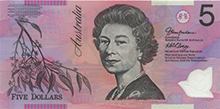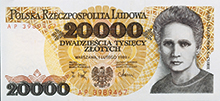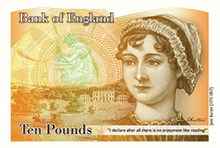Currency Notes
Noteworthy Women
Finance & Development, September 2015, Vol. 52, No. 3
There is a notable lack of gender diversity on currencies around the world
When it comes to money, it is a man’s world. Or so it seems, judging from the faces of the great and the good who adorn the vast majority of countries’ bills and coins. Yet some countries do use their currency to honor the contributions of their female leaders, artists, and other trailblazers—past and present. The United States is a latecomer to the club, announcing in June 2015 that it would feature a woman on a banknote for the first time in over a century. So who are the women getting recognition—and why does it matter?
Births and marriages

The last American woman on a dollar note was Martha Washington, the first First Lady, in the 19th century. And indeed, even today, women often find a place on a banknote or a coin by virtue of birth or marriage. The likeness of Queen Elizabeth II, head of more than a dozen sovereign states, passes between hands across the globe.

It is perhaps a reflection of obstacles in society that some of the world’s most celebrated women emerged from the shadows of their husbands, arguably eclipsing them in the process. Charismatic figures—on their nation’s banknotes today—include the politicians Eva Peron in Argentina and Corazon Aquino in the Philippines and artist Frida Kahlo in Mexico.

It is striking how many banknotes pay tribute to pioneering women who had to break in to political, artistic, and scientific circles from the outside. Leading suffragettes are currently honored on the dollar bills of Australia, Canada, and New Zealand. Marie Curie, the physicist and chemist who was born in Poland but became a French citizen, has been featured on both francs and zlotys: such is the pride of both France and Poland in the first woman to win a Nobel Prize. Supporters of better gender balance on banknotes point to the inspiration such idols can give young girls.

And yet the focus is not always on the achievements of individual women. In the 1960s, China’s 1 yuan note showed a woman on a tractor, reflecting the economic principles that the government wished to promote. Today the 2 yuan note depicts anonymous ethnic minority women, a message of inclusion that eschews individual identification.
“How important it is for us to recognize and celebrate our heroes and she-roes!”—Maya Angelou
Value of money

U.K. and U.S. campaigns for women on banknotes have stirred significant debate, including lively exchanges on the merits of various candidates, but ugly episodes as well. In June 2013, British feminist activist and journalist Caroline Criado-Perez was subjected to a coordinated attack of abusive messages on social media after her successful campaign to feature Jane Austen on the £10 banknote.

The debate has touched a nerve, perhaps because their conspicuous absence on banknotes raises broader questions about how women are undervalued in the economy. Studies show that gender gaps in labor force participation and pay remain stubbornly wide.

Earlier this year, an IMF report found that 90 percent of countries it studied had at least one legal obstacle to women’s economic activity. The IMF study concluded that when women fully participate in the labor market, there can be significant economic gains.
Successful economies recognize and reward the efforts of everyone, both men and women. It is about time our money did the same. ■


